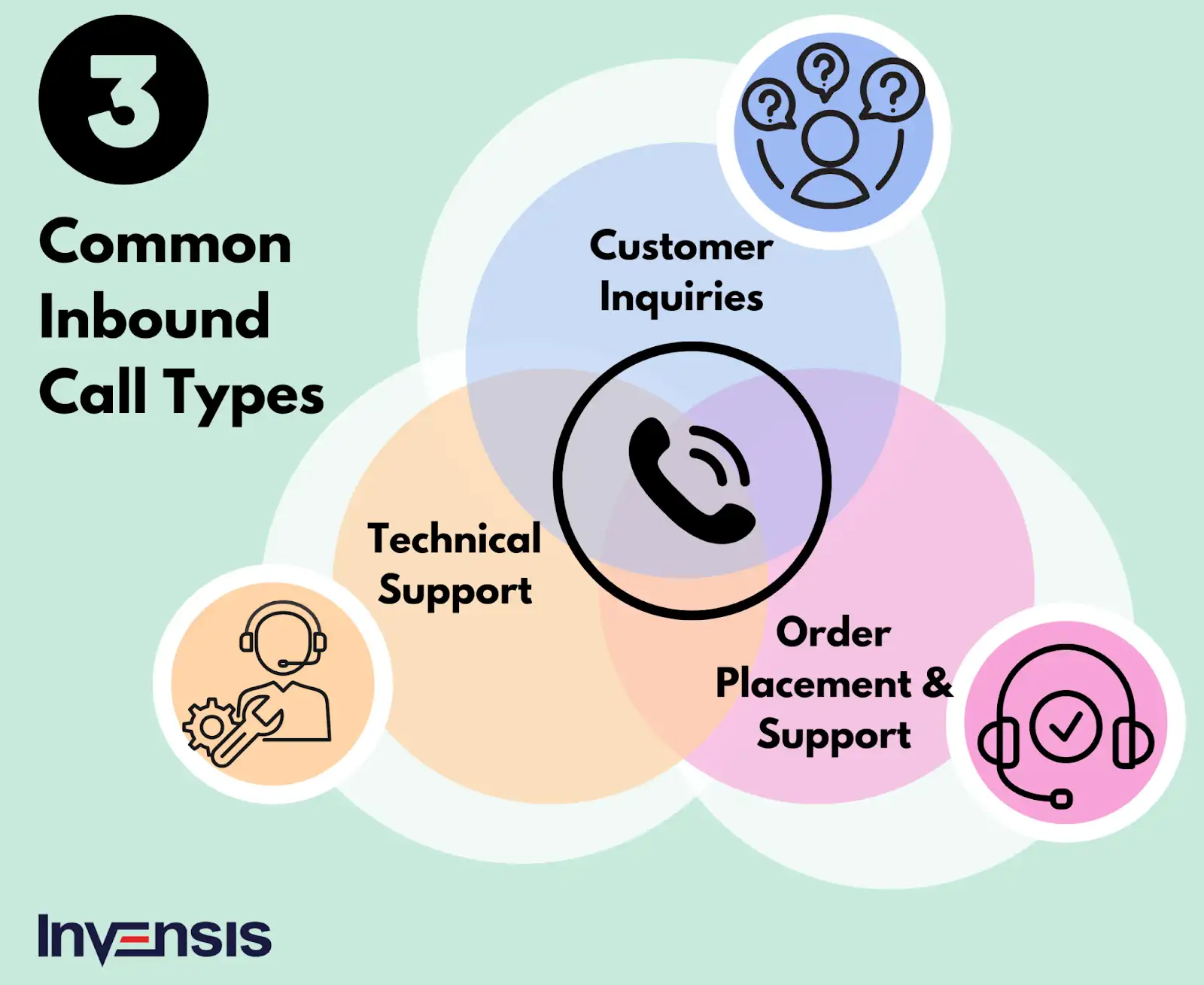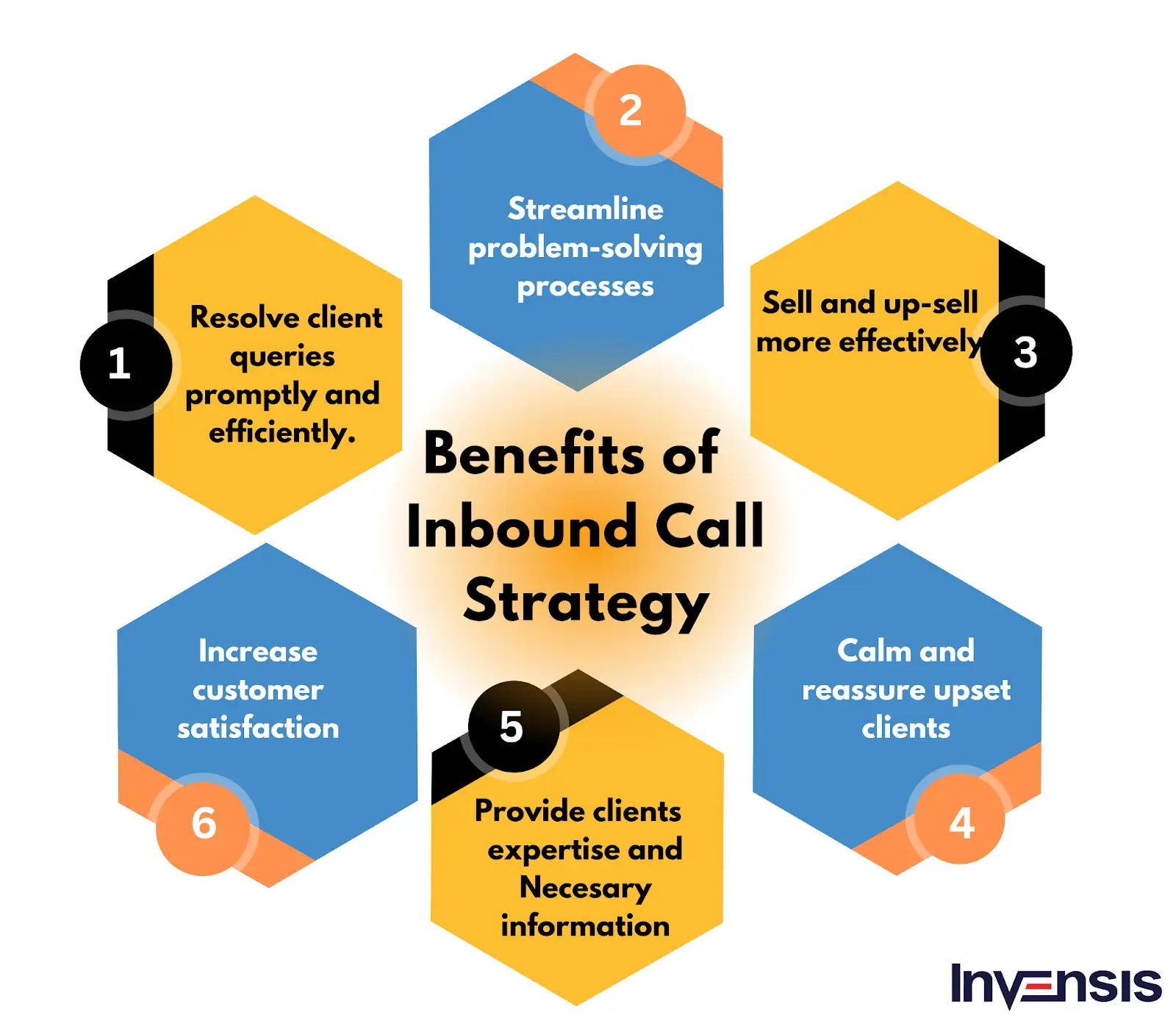
Content
Inbound call centers play a pivotal role in ensuring seamless communication between businesses and their customers. As the first point of contact for many organizations, they serve as the backbone of customer support, providing timely assistance, resolving queries, and building trust. However, managing an inbound call center effectively comes with its own set of challenges. High call volumes, fluctuating customer expectations, limited resources, and ensuring consistent service quality are just a few hurdles that can impact performance.
Given these challenges, developing a robust inbound call center strategy is no longer optional—it’s essential. A well-structured strategy can streamline operations, enhance agent efficiency, and improve customer satisfaction, ultimately driving business growth.
This blog delves into the key components of creating effective inbound call center strategies, offering insights into how businesses can optimize their call center operations.

Ways to Develop Effective Inbound Call Center Strategies
The quality of service you provide to your customers goes a long way in creating an image of your business. Here are different ways of implementing effective inbound call center strategies.
1. Implement a Comprehensive Training Program
A comprehensive training program equips agents with the skills, knowledge, and tools they need to handle diverse customer interactions effectively. It includes technical training, product knowledge, and soft skills like communication and empathy, ensuring agents are prepared for every situation.
Effective training fosters confidence, reduces errors, and improves customer satisfaction. Well-trained agents can resolve issues faster and build stronger customer relationships, ultimately boosting the call center's overall performance and reputation.
2. Leverage Advanced Call Center Technology
Advanced call center technology, such as AI-driven analytics, CRM integrations, and cloud-based systems, enhances efficiency and simplifies operations. These tools allow agents to access customer data in real-time, improving their ability to deliver personalized and timely support.
The adoption of modern technology reduces wait times, optimizes resource utilization, and streamlines processes. It also empowers agents with insights that lead to higher first-call resolution rates and a better overall customer experience.
3. Focus on Customer-Centric Communication
Customer-centric communication prioritizes understanding and addressing customers' needs with empathy and professionalism. It involves active listening, clear articulation, and maintaining a polite tone, ensuring that customers feel valued and heard.
By fostering trust and satisfaction, customer-centric communication strengthens brand loyalty. This approach also encourages positive word-of-mouth, helping to retain customers and attract new ones while minimizing potential conflicts.
4. Optimize Call Routing and Queuing Systems
Optimized call routing and queuing systems ensure that customer inquiries are directed to the most qualified agents. Technologies like skill-based routing and automatic call distribution (ACD) systems play a crucial role in this process.
Efficient routing reduces customer frustration, minimizes hold times, and enhances first-call resolution rates. It also improves agent productivity by aligning inquiries with their areas of expertise, creating a seamless interaction for both customers and agents.

5. Establish Clear Key Performance Indicators (KPIs)
KPIs provide measurable goals that align with the call center’s objectives, such as average handling time, customer satisfaction scores, and first-call resolution rates. These metrics guide teams in maintaining high standards and achieving operational excellence.
Clear KPIs help identify strengths and weaknesses, enabling data-driven decisions. Regular tracking and evaluation ensure continuous improvement, aligning call center performance with business goals and customer expectations.
6. Regularly Monitor and Analyze Call Metrics
Monitoring and analyzing call metrics helps identify trends, inefficiencies, and areas for improvement. Metrics like call volume, hold time, and abandonment rates provide valuable insights into the call center's performance.
Proactive analysis allows management to implement changes that enhance efficiency and customer satisfaction. Regular evaluations ensure the call center stays adaptive and aligned with evolving customer needs.
7. Develop a Strong Knowledge Base for Agents
A robust knowledge base provides agents with instant access to resources like FAQs, troubleshooting guides, and company policies. This centralized repository empowers agents to resolve issues quickly and accurately.
A well-maintained knowledge base reduces the time spent searching for information, leading to faster resolutions and improved customer experiences. It also helps standardize responses, ensuring consistent communication across the team.
8. Leverage Omnichannel Communication Tools
Omnichannel tools integrate various customer communication channels—phone, email, chat, and social media—into a unified platform. This approach ensures seamless interactions and improves accessibility for customers.
With omnichannel communication, agents can provide consistent and efficient support, regardless of the medium. It enhances customer satisfaction by offering flexibility and reducing the need for repeated explanations during interactions.

9. Optimize Self-Service Options (IVR, chatbots)
Self-service tools like IVR systems and chatbots enable customers to resolve common issues independently, reducing the load on agents. These tools are available 24/7, providing convenience and instant solutions.
Optimizing self-service options improves customer satisfaction by offering quick and efficient resolutions. It also allows agents to focus on complex inquiries, balancing workload and enhancing the overall efficiency of the call center.
Conclusion
Inbound call centers are evolving with advancements in AI, automation, and omnichannel communication. Managing these centers is increasingly complex due to rising customer expectations, high operational costs, and the need for 24/7 availability. Businesses often struggle with hiring, training, and retaining skilled agents, while simultaneously keeping up with technology upgrades. A third-party provider simplifies this by offering expertise, scalable resources, and access to advanced tools.
At Invensis, we deliver exceptional inbound call center services with cutting-edge software solutions, including CRM integration, real-time analytics, and other advanced tools. Our offerings encompass customer support, technical assistance, order processing, and complaint resolution, ensuring seamless customer interactions. Contact us to leverage our expertise and focus on core operations while we ensure excellent customer satisfaction.
Discover Our Full Range of Services
Click HereExplore the Industries We Serve
Click HereBlog Category
Related Articles

Find the leading accounting firms in Singapore trusted by businesses for audit, tax, and advisory services.
November 6, 2025
|

Explore the leading accounting firms in South Africa providing expert audit, tax, cloud accounting, and payroll services. Learn about their key features and unique offerings.
November 6, 2025
|

Explore what project accounting is, how it works, and why it’s essential for businesses. Understand key principles, revenue recognition methods, and best practices to improve your knowledge.
October 7, 2025
|
Services We Provide
Industries We Serve







.webp)